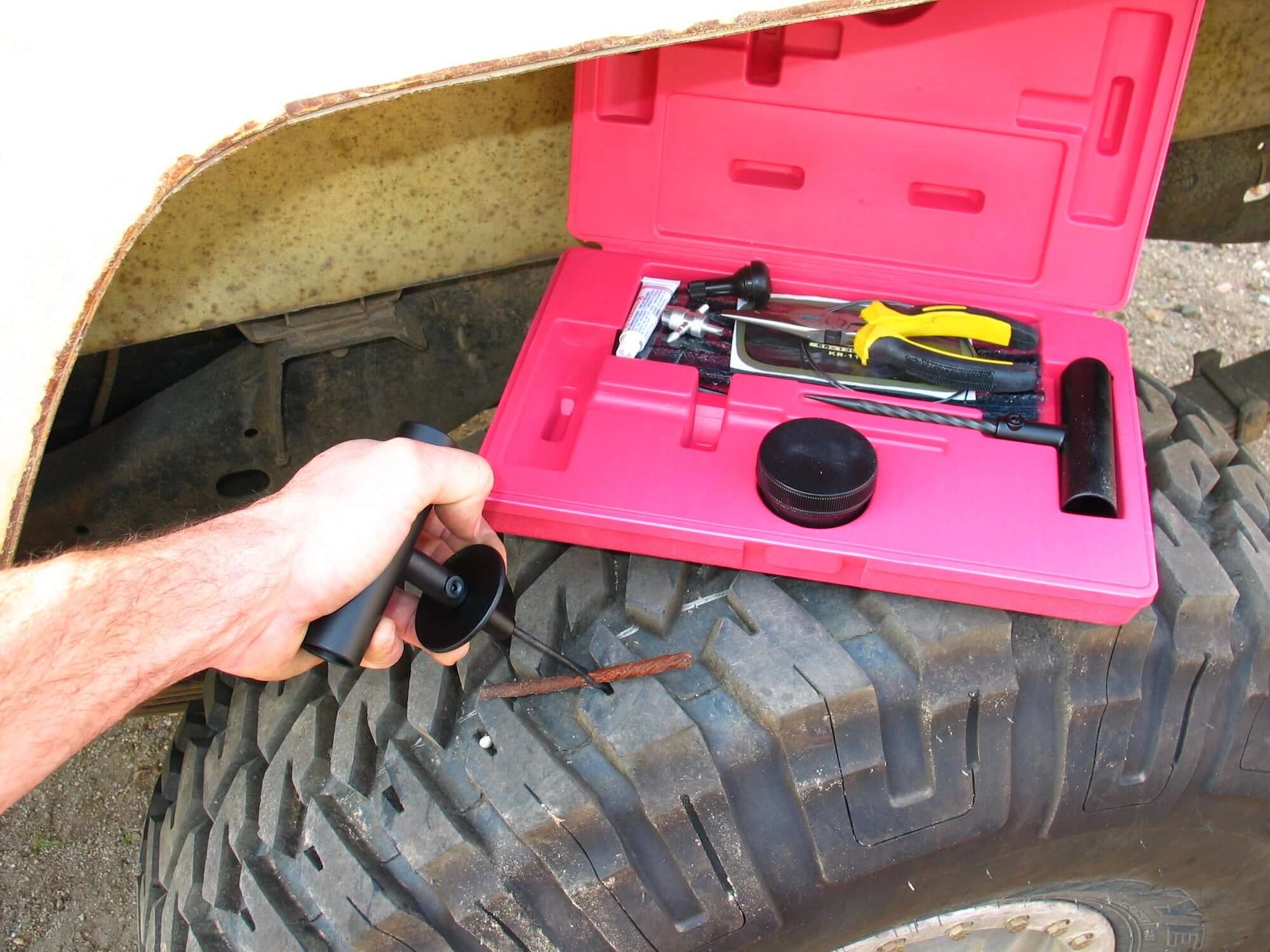
In current years, overlanding has become increasingly popular. This is in part due to the rise of social media, as well as the popularity of off-road vehicles. Because of this, there are now more people than ever who are looking for information on how to repair their own overland vehicles.
One of the most common questions we get here at 4WP is how to plug a tire. This is understandable, as flat tires are one of the most common issues that people have with their off-road vehicles. While it may seem like a daunting task, repairing a flat tire is actually quite easy, as long as you have the right off road tire repair kit and know how to use it.
This in-depth guide will show you how to properly plug a tire, as well as how to use a tire plug kit. We’ll also go over some of the different tools that you’ll need in order to get the job done right. The last thing you want when you’re out in the middle of nowhere is a flat tire.
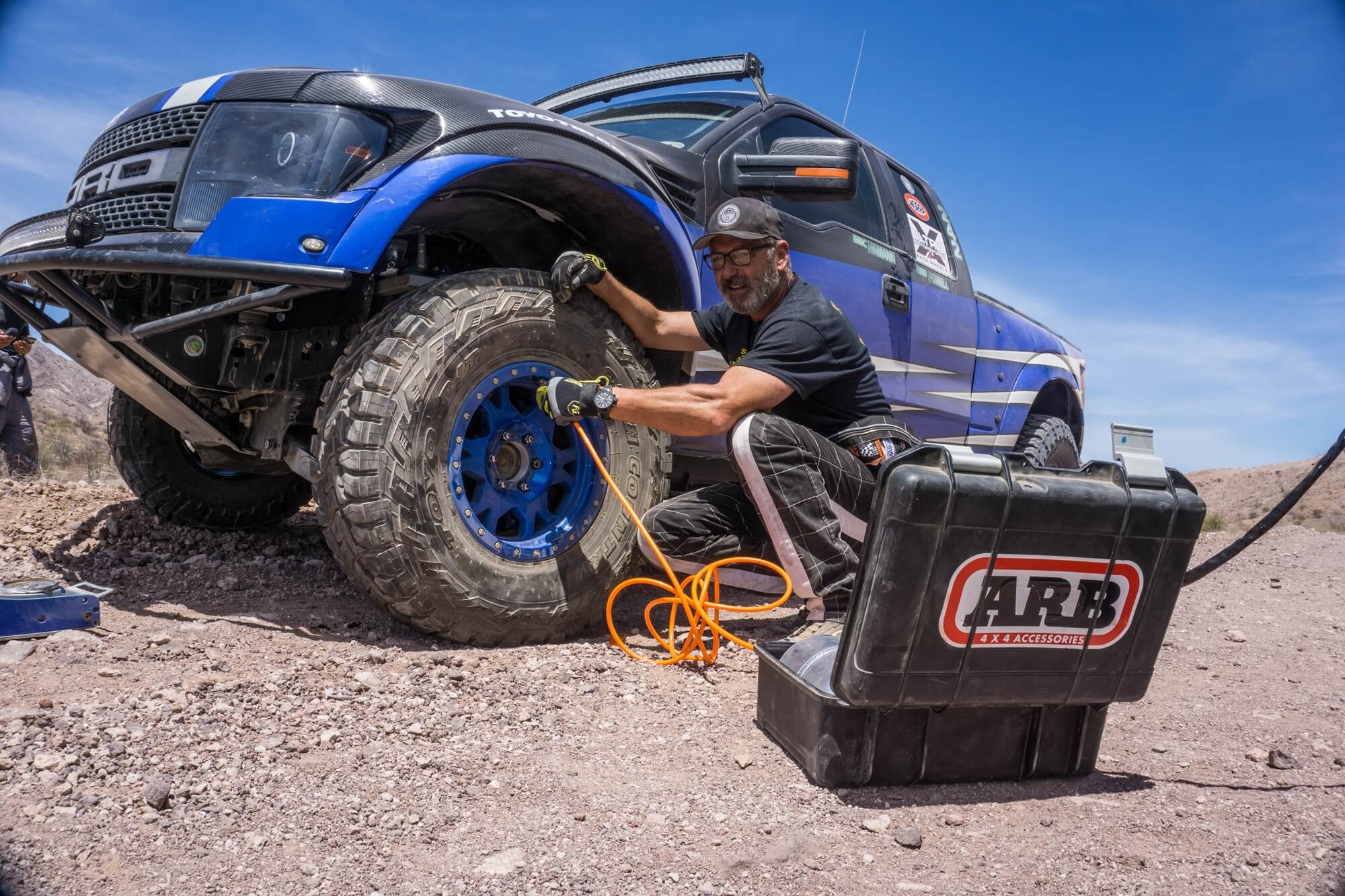
Why You Should Know How to Repair Your Tires
Most people don’t think about their tires until a problem comes up. But, if you’re someone who relies on their vehicle to you to the edge of the world and back, it’s important to be prepared. After all, flat tires are not only inconvenient, but they can also be dangerous when out in the wilderness.
Not to mention, AAA is not going to be able to come to your rescue. So, it’s always good to know how to change a tire and how to repair a flat. That way, if you do happen to run into an issue with your tires, you’ll be able to fix it quickly and get back to enjoying everything mother nature has to offer.
For most, fixing a flat is a right of passage, and once you’ve done it a few times, it’s easy. But, if you’ve never repaired a tire before, it can be a bit daunting. Especially, if you don’t have the right tools or know how to use them.
So get yourself familiar with everything before the inevitable happens. Be sure to check out the best tire patching and plugging tools below. These will come in handy should you ever have to fix a tire while out on the trail.
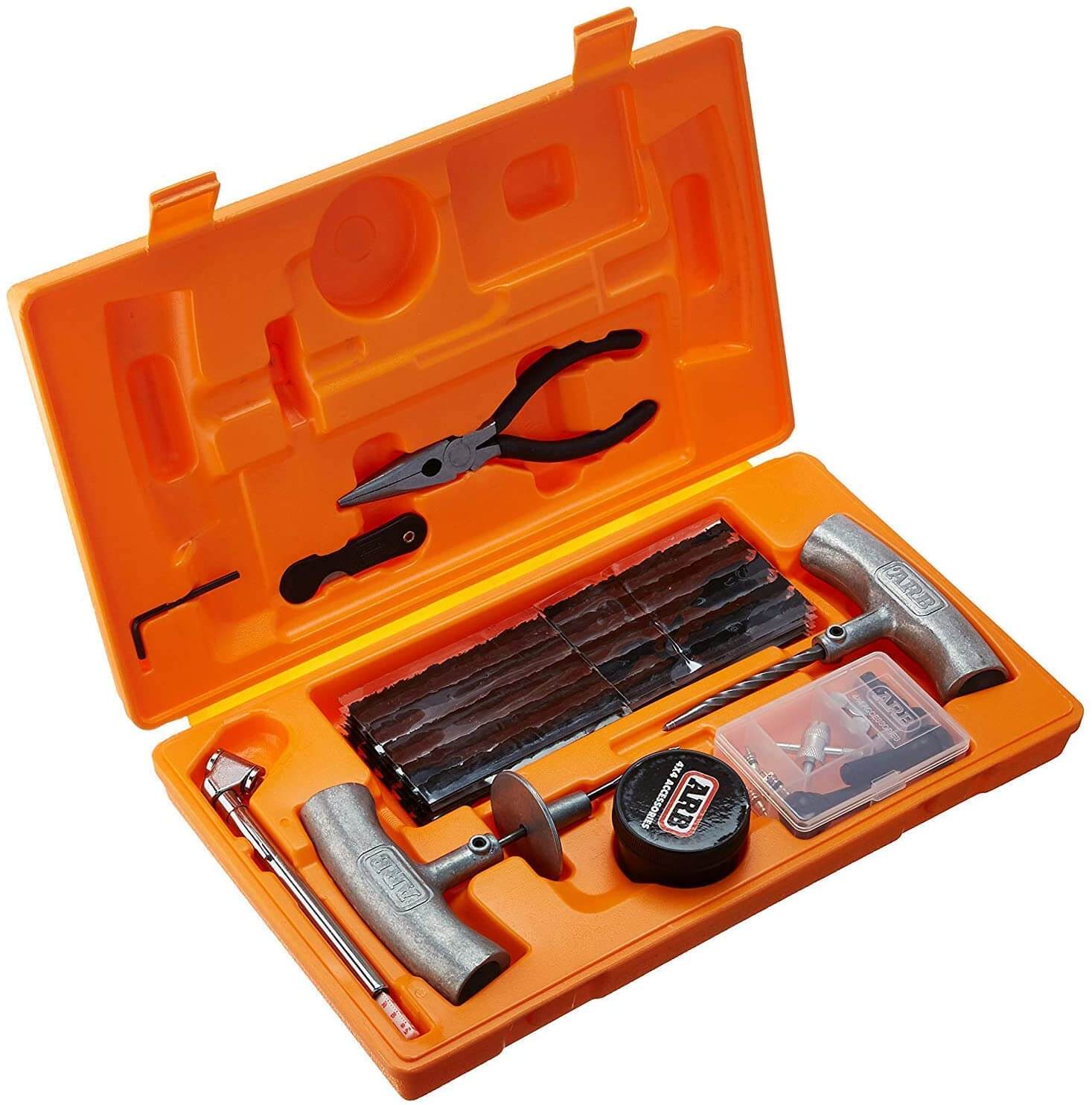
Tools For Plugging & Patching
You need the right tool for the right job. That statement couldn’t be truer when it comes to fixing a tire. While you can get by with a basic $5 kit, 4WP recommends investing in a good quality off road tire repair kit. That way, you’ll have everything you need to fix a tire and won’t have to worry about improvising should the situation arise.
When it comes to tools, there are a few different options that you can go with. The most popular is the Smittybilt Tire Repair Kit. It comes with a plugger, reamer, lube, and more. On top of that, the kit features a pair of heavy-duty needle nose pliers and a handy carrying case. This is a great option for those looking for an all-in-one solution.
Want a kit that will take on as much as your overlanding rig, the Trail Gear Tire Plug Kit is a great option. It includes a plugger, reamer, and lube, as well as replacement heads all stored in a durable plastic case which can easily be easily stored.
Finally, be sure to include all necessary equipment in your overlanding kits, such as a patch kit, bead buster attachment, and even a set of tire levers for good measure. This way, you’ll be prepared for anything and will have all the tools you need to change or repair a tire no matter where your adventure takes you.
Steps For Tire Repair
While the pros may make it look easy, there is a bit of a process that goes into repairing a tire. But, once you’ve done it a few times, it will become second nature. So, here’s a quick step-by-step guide on how to plug a tire.
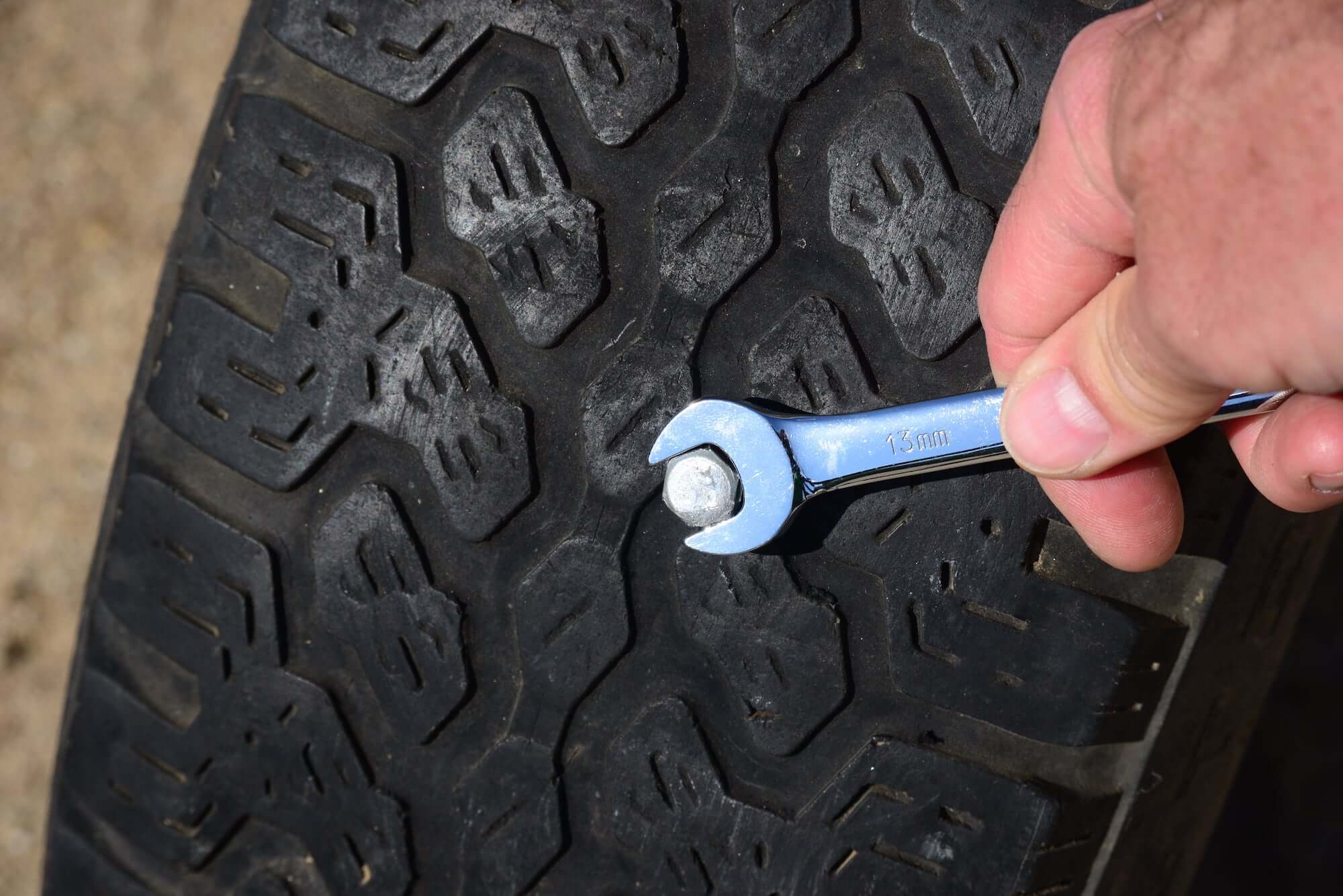
Find the Problem
Firstly, start by finding the puncture in the tire. You can do this in several ways. If the wheel is off the vehicle, it can be much easier to locate. However, if the tire is still on the vehicle, you’ll need visually inspect and listen for any air that escapes. Once you’ve found the hole, it’s time to get to work.
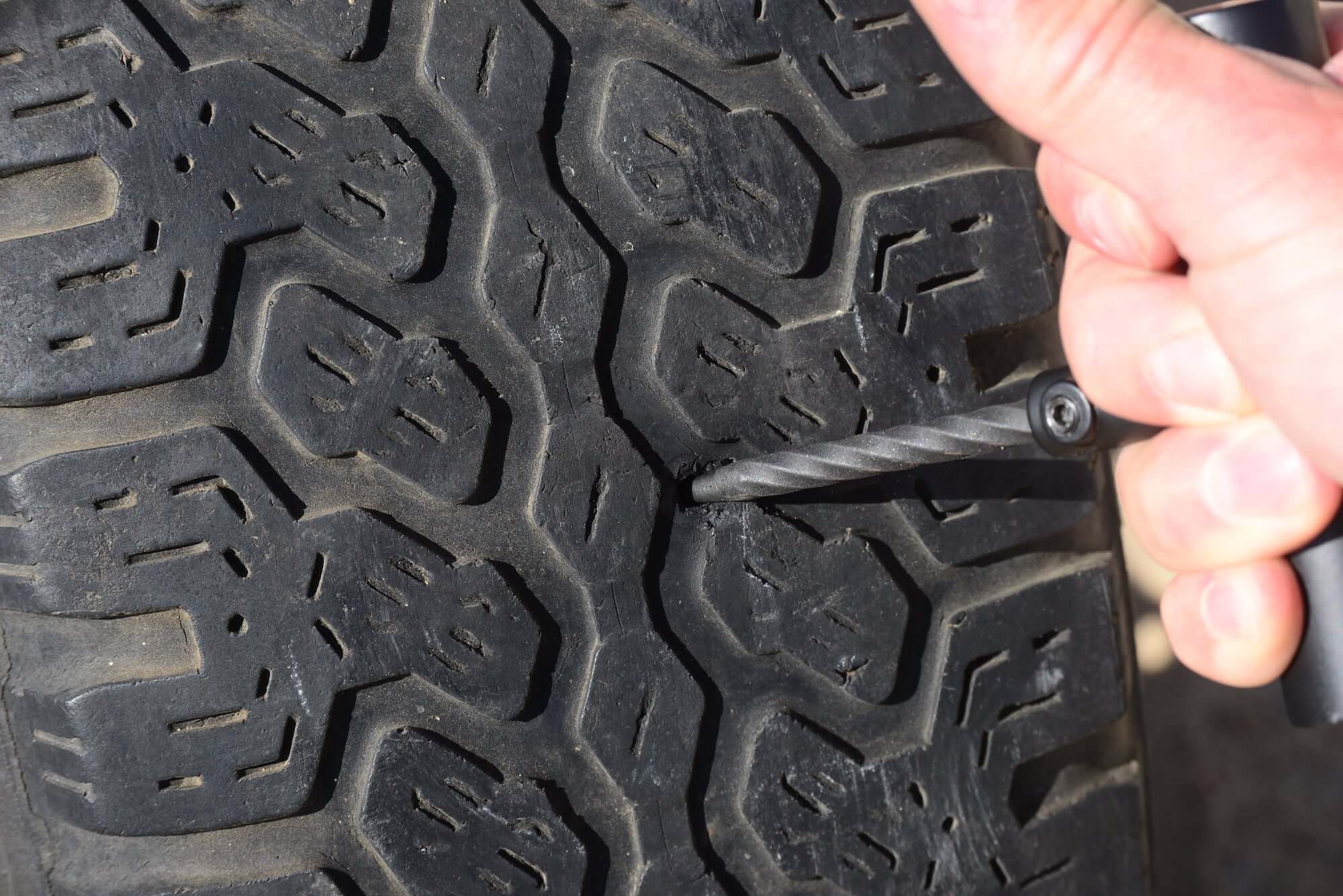
Clean Out the Hole
Use the reamer to clean out any debris or foreign objects from the hole in the tire. This step is crucial if you want the tire to hold air after being plugged. If the hole is not cleaned out properly, the plug will not be able to adhere to the tire and will eventually fall out. Having a high-quality plug kit is crucial for this step as cheap reamers will have plastic handles that are prone to breaking.
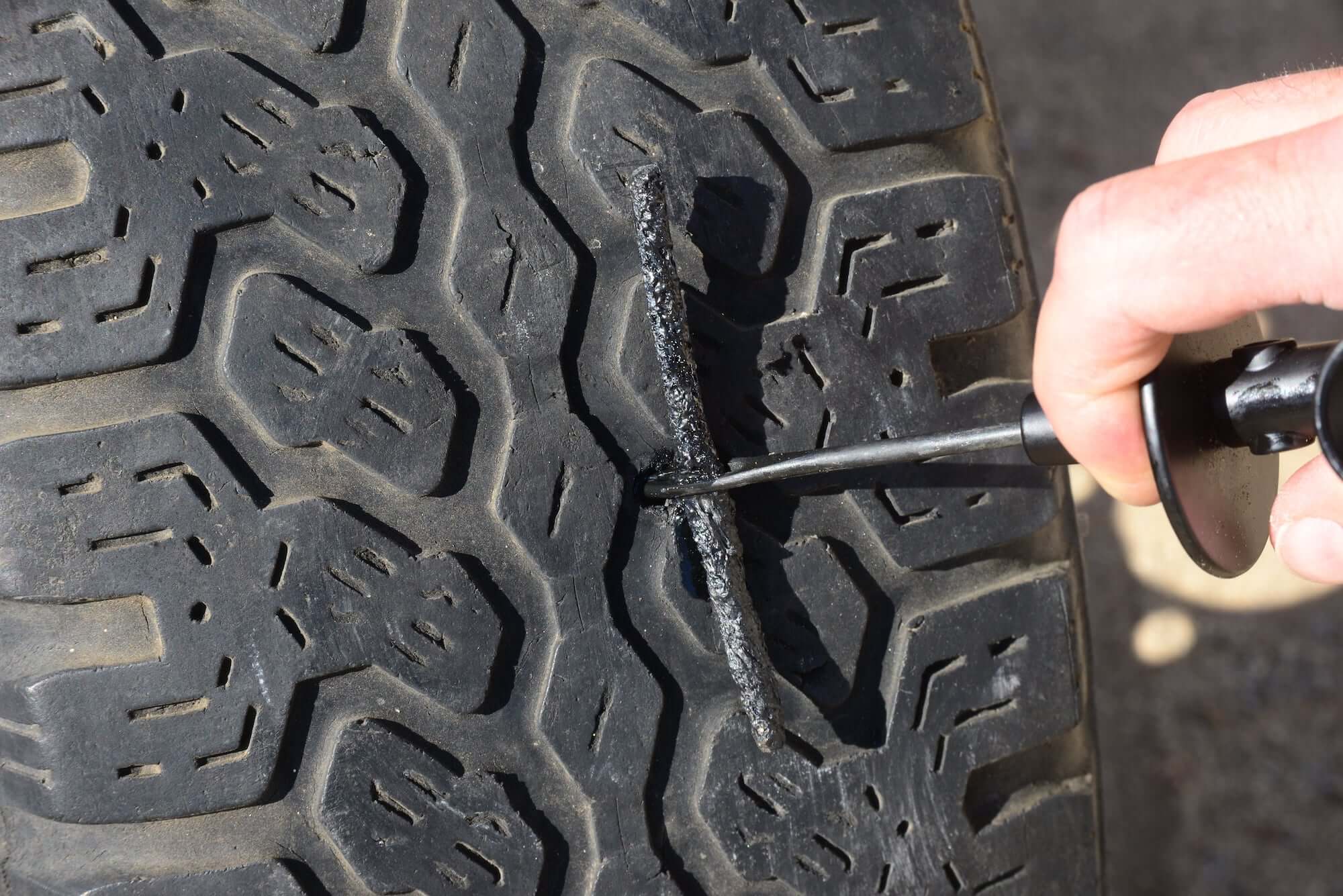
Insert the Plug
Next, take the end of the plugger and insert it into the hole in the tire. Once it’s in place, start pushing it into the tire. This step is important as you want to make sure the plug is inserted properly and securely. Finally, with a swift motion pull the plugger out and enjoy a leak-free seal.
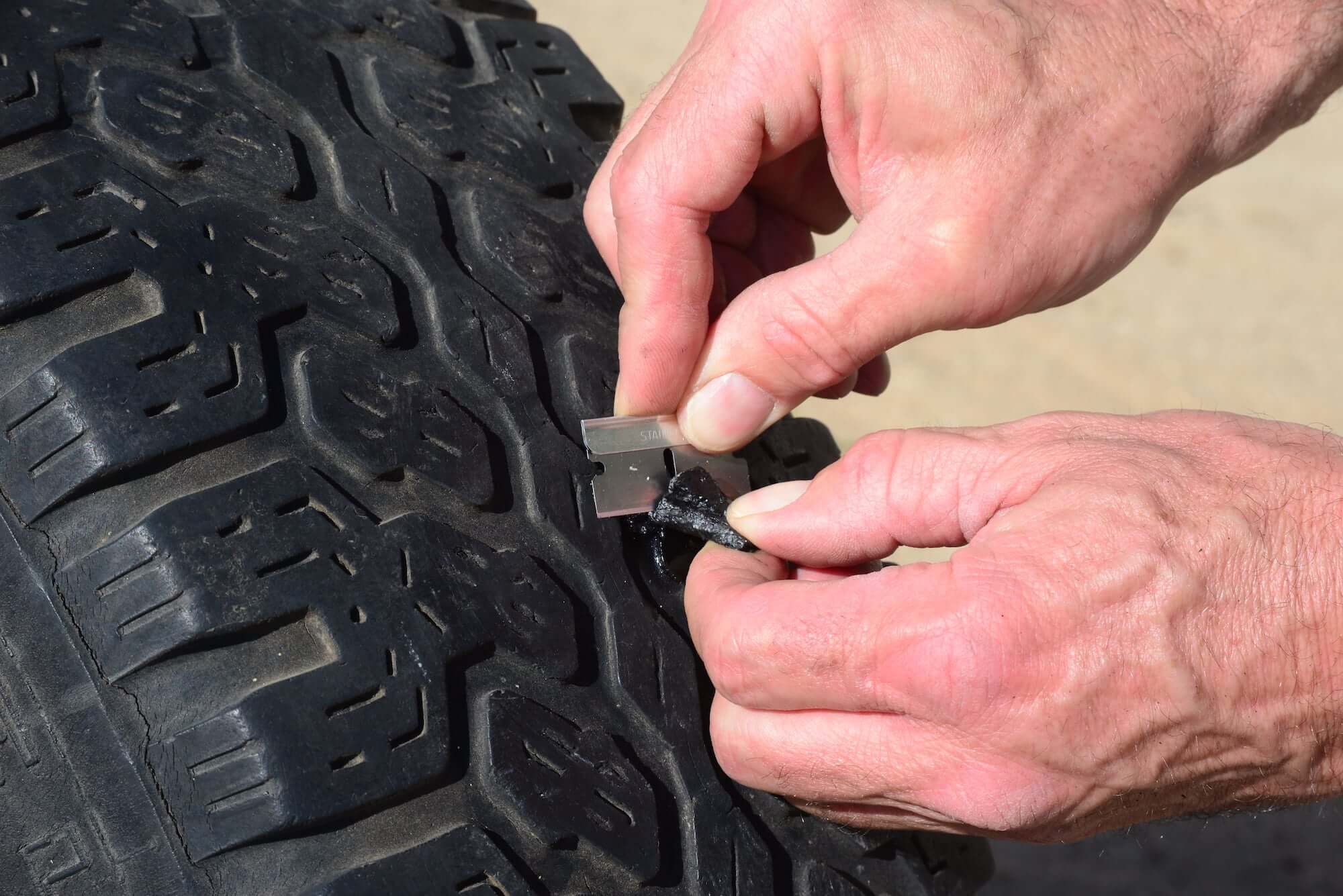
Trim the Excess
Trim off any excess material that’s sticking out of the hole. You can do this with a sharp knife or a pair of scissors. A basic razor blade also works wonders. Just be careful not to cut too close to the hole as you want the plug to stay level with the outer tread block.
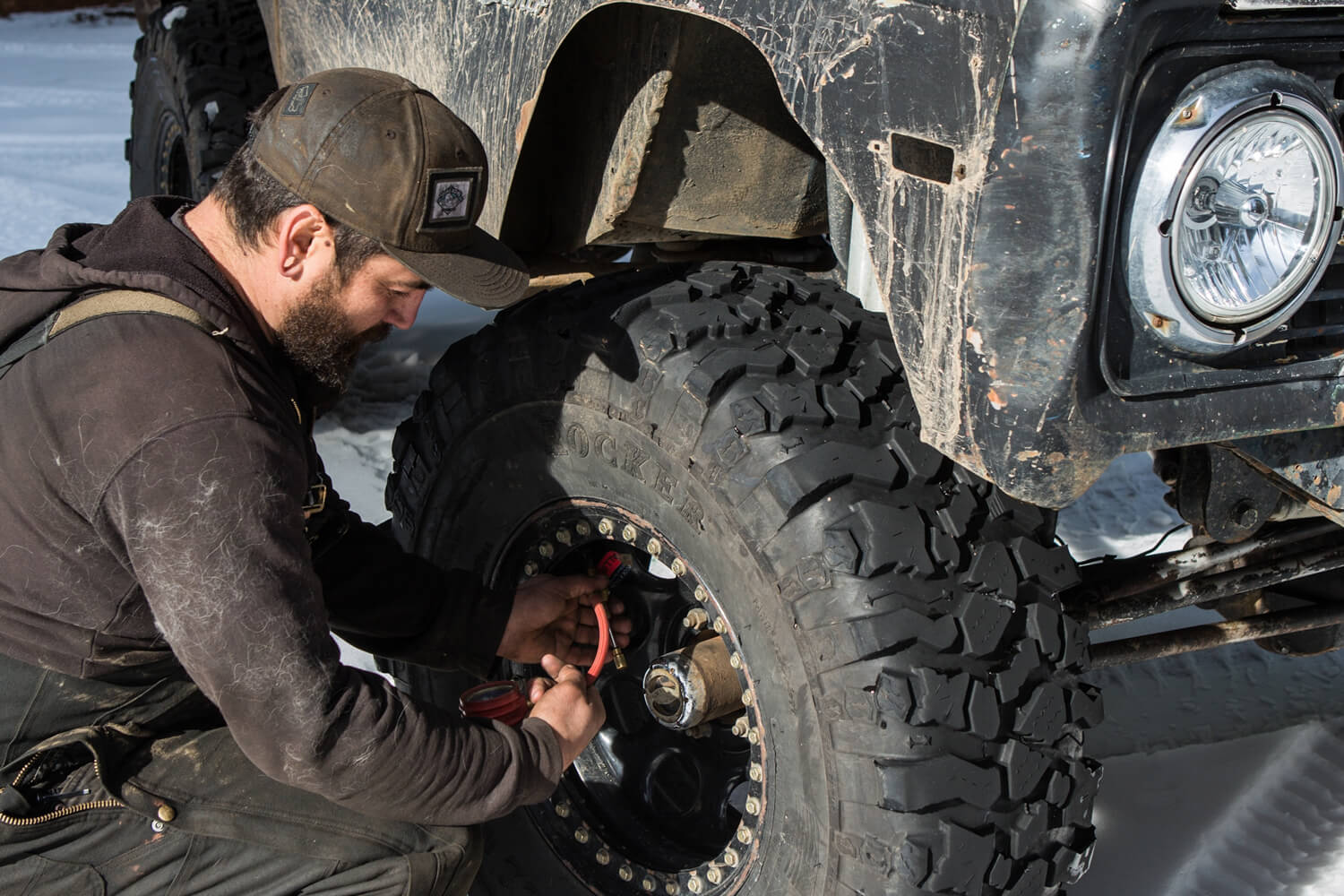
Test It Out
After you’ve plugged the tire, it’s time for a quick test. Put some air in the tire and see if it holds. If it does, then you’re good to go. However, if it doesn’t hold air, then you’ll need to remove the plug and start over.
That’s all there is to it! With these steps, you’ll be able to quickly and easily fix a tire should you ever have a flat while out on the trail. Just remember, practice makes perfect. So, if you can, try to patch up a few tires before you head out on your next big adventure.



2